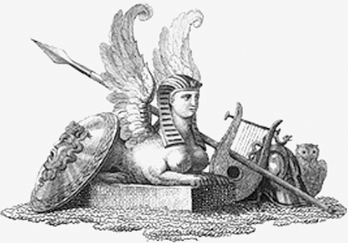
Special Project of The Fourth Congress “Global, International and National in the History of Art”
Boris Groys
A View of Art History after Its End
The history of art as we know it today emerged and evolved in the nineteenth century, the age of historicism par excellence. It evolved in parallel with the establishment of the museum system, in other words, along with the gradual emancipation of the artwork from its original context. Indeed, the history of art is little more than the history of such emancipation. Statues of gods of the Antiquity, Christian religious paintings, secular portraits, and pictures of aristocratic and bourgeois life were put into museum space side by side. Eventually they were supplemented with, among other things, Egyptian mummies, pre-Columbian cult objects, Indian religious sculptures, Chinese calligraphy, and Japanese prints. All those objects were removed, often by force, from their original cultural contexts and placed within the artificial context of art. Consequently, all of them lost their original religious or secular function and took on a new one as an object of “impartial” aesthetic contemplation. History only is truly historical when it is teleological. The end purpose (telos) of European/Western history of the arts was emancipation of the individual artwork as a metaphor of the emancipation of the individual per se. The freeing of the artwork from its context and its de-functionalization conformed to the process of liberation of man from every form of exploitation.
In the age of modernism artists themselves began to follow this ideal of emancipation. The artwork was becoming ever freer and more autonomous. It ceased to be representational and thus lost its traditional function of documenting the surrounding reality. Nor was it any longer expressive or representative of the artist’s inner life: geometric abstraction is not subjective, nor is, for example, pop art. With the appearance of modernism, the history of art gained firm ground under its feet. Now the emancipation of the artwork stopped being an external operation on its object, an operation stripping it of its context and function. Emancipation evolved into its internal law while art itself became historical and aimed at a certain goal, the same goal originally aspired to by the history of art. It was the maximum possible decontextualization of art: the artwork was to make a break with its national cultural tradition, the aesthetic tastes of its home environment, etc.
No longer a symptom of its time, art became a sign of dissatisfaction with and protest against it. The artist looked towards the future or turned to the past, but in any case, tried to break with the status quo. At best, the status quo became a subject of analysis from the position of an outside researcher.
Accordingly, in the modernist period the history of art sought to find out who of the artists had especially radically broken with the tastes and conventionalities of their environment and time. It would be an error to think that in that age art shed all the criteria of objective evaluation. One such criterion was participation at the evolution of art as an autonomous, emancipated, and sovereign practice. The history of art is not part of general history. On the contrary, only that art becomes part of the history of art which makes the cleanest possible break with its time. It is only such art that wins a place in museum collections because by their very nature they are trans-historical. Of course, as to what art has made the most drastic break with its time always is a subject of discussion.
Hence the problem of historicizing art of the 1930s-1940s, which confronts Russian, German, and Italian historians alike. The art of socialist realism is hard to historicize because it does not fit into the history of emancipation of the artwork from its environment and its tastes, primarily from state patronage. To understand a work of socialist realism, you have to reconstruct its context, that is, the ideology and prevalent tastes of the time. One may argue that the same should be done to explore the art of the Renaissance, but this is just the point: socialist realism turns out to be an historical anachronism that does not fit into the history of art as a history of emancipation. A similar anachronism is the larger part of the so-called unofficial art of the Soviet period that reproduced the modernist strategies of the earlier time.
For this reason the historicization of so-called totalitarian art was undertaken by artists rather than historians: by the Transavanguardia movement in Italy, by artists such as Kiefer, Richter and Baselitz in Germany and by artists of Moscow conceptualism and Sots Art in Russia. This historicization consisted in interpreting relevant artworks as pure forms and emancipating these forms from the circumstances of the time that dictated it. One characteristic example in this respect is Baselitz’s series of “Russian Paintings”, in which he reworked well-known pieces of Soviet socialist realism in his signature manner, that is, “upside down”, turning these realistic images into abstract forms.
This example shows that so-called post-modernism is little more than an extension of modernism, which becomes emancipated from its own historical form. Now all artworks of the past can be reinterpreted in ways demonstrating their pure, acontextual, trans-historical, emancipated form. In fact, even early avant-garde texts suggest such possibility. For example, Kandinsky noted that any painting was merely a combination of lines and colours on canvas, that is, actually an abstract form. In this sense post-modernism does not cancel out but only radicalizes and rounds off the modernist and therefore any history of arts, because there is no other history of arts.
Indeed, a short while ago everyone talked about the end of the history of art, and today it has become so obvious that no one ever mentions it. The emancipation of the artwork once resulted in the emergence of a global art market, which has now begun fast to disintegrate into national markets. Under the circumstances, art is obviously dropping out of history: the market is not historical but cyclical.
Hence the desire to write art into big history, a nostalgia for which was always there. Already Hegel wrote in his Aesthetics that art was a thing of the past: previously people kneeled in front of the statues of gods, seeking their help, while Christianity proclaimed that God was invisible. Hegel thus believed that true art was only that which was fitted into the religious rituals of its people. That line of reasoning in understanding art continued throughout the twentieth century. Suffice it to recall Benjamin’s regrets over the loss of aura by artworks following their removal from places of their historical origin – their reproduction or display outside their original cultural context. Heidegger for his part discussed in “The Origin of the Work of Art” the initial impetus that the work of art provides for the emergence and subsequent existence of a “historical people” and its way of life and at the same time criticized the museum for turning a work of art into an ordinary thing.
The return of art into big history creates the illusion of an end to the autonomy of art. It begins to be considered from the historical and sociological point of view as a manifestation of the aspirations and tastes of certain social, ethnic, economic, gender and other groups. Apparently, in this context there is no longer any differentiation between good and bad art, that is, one that belongs in the history of emancipation of art and one that has gone overboard. Any art is legitimate if it meets the tastes of one social group or another. In other words, in this case it is the public rather than the history of art that decides what is art and what is not. But this is, of course, an illusion.
Art becomes part of big, that is, ultimately political history not by reproducing the tastes and beliefs of certain social groups but by redefining them. Over the past decades, artists have been increasingly concentrating on thematizing their ethnic, gender and, more generally, cultural identity. But this thematization of identity only is productive if it is polemical and opposes the prevalent stereotypes historically associated with a certain identity. In other words, art forms part of big history only when it is itself historical, when it breaks with the historically given cultural identity and imparts a new form to it. Where there is no break with contemporaneity or where this break has not received an adequate artistic form, it proves impossible to write the work of art either into the history of art or into history per se.



